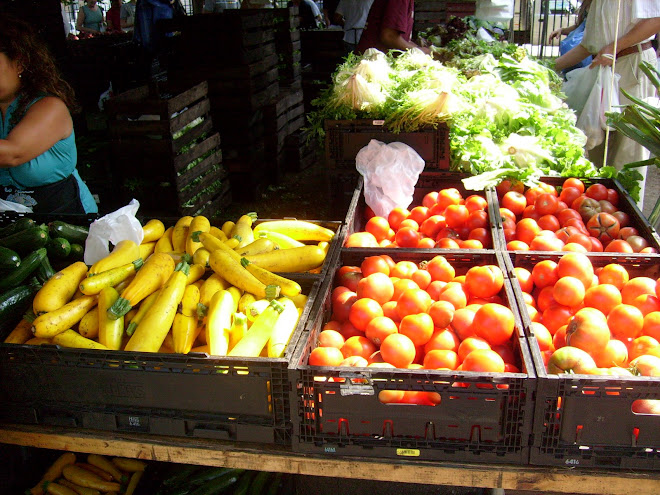
Only a few months ago I had my first experience eating Ethiopian food. It was exciting and tasty, and definitely an exotic experience. I loved the aromas, the seasonings, and the presentation, but at this certain restaurant, the waitstaff barely spoke English or were possibly just pretending, explained nothing, and were rude. There were nice basket-like woven tables where the injera bread was placed, which was charming, but would've served cocktail hour better than an actual meal. We awkwardly leaned over the basket and did our best. There are no utensils used since the meal is eaten communally with your hands and can be relatively messy, it wasn't easy-- a good experience, but not a great one. Most importantly, though, I got the gist of the food and knew I needed more.
I could see the potential and liked it enough to continue my exploration of Ethiopian cuisine. Onward to the next place that was recommended to me. . .I went to Ghenet. . .and my life changed forever. Seriously.
On Friday night, I went out for my second Ethiopian dinner and feel compelled to share. It just wouldn't be nice to keep it all to myself. I will start with an explanation/overview of the cuisine and a bit about the Ethiopian dining experience.
"Dining in Ethiopa is characterized by the ritual of breaking "injera" and sharing food from a common plate, signifying the bonds of loyalty and friendship. The traditional way of eating with the fingers. "Injera" is placed on the plate with a variety of dishes decoratively arranged around it. A small portion of "injera" is torn off and wrapped around a mouthful of the selected dish."--Ghenet, Brooklyn, NY
Also thanks to Ghenet, here are some terms that I thought were useful when navigating an Ethiopian menu or recipe. I have added a few thoughts to some of the original definitions. I know, I am obsessed.
Injera: staple bread in Ethiopian cuisine, a flatbread made of teff; it seems like sort of a sour/sourdough, savory giant crepe. Often made with half teff/half wheat flour, but sometimes 100% teff can be requested for gluten-free bread.
Teff: a fine grain unique to Ethiopia. Teff is tiny and usually red. It's a gluten free grain that is 11% protein and contains about 17 times the calcium as other grains, such as whole wheat or whole barley. It has sort of a nutty, almost maple-y flavor when cooked whole.
Wett: dipping sauce which may be prepared using a variety of meats, fish, and vegetables. Wett is cooked with Berbere.
Berbere: Ethiopian seasoning made from mature red chili peppers, onions, garlic, and other spices, may range from very mild to very hot. Berbere is sun-dried then mixed with more spices & used in Wetts.
Aletcha: a more mildly spiced dipping sauce prepared with a variety of meats or vegetables
Nitire Kibe: another Ethiopian basic, nitir kibe is pure clarified butter seasoned with several condiments and used in traditional sauteing.
Kaey Wett: A lively sauce prepared with berbere, nitir kibe, and meat, fish, or legumes.
That being said, there is still a lot, and mean A LOT to learn about this cuisine. It's impossible for me to include all that I want to here. It's new to me and I'm new to it, so this will be a journey. This is part 1--there will definitely be part 2, maybe 3 or 4. Here are my impressions of the essence of the food from my amateur perspective.
If you have never had it, and are trying to picture what these new flavors/flavor combinations might taste like, the closest food I can compare it to is curry, and that is a really general statement. My own expectations had me assuming the dishes would be comparable to Indian curry in both fragrance and flavor. The flavor is definitely not curried, but texturally and visually, I think they compare for the purpose of trying to experience food from written words. The fragrance is all it's own and wouldn't be confused for anything else.
Like most Indian curries, the layers of flavors infused into the sauce give the dishes depth, pungancy, heat, sweet, savory, sour and most definitely with umami. Rather, the sauces ARE layers of flavors, don't just contain them. Another parallel to curry is that, traditionally, clarified butter is used as the cooking oil, much like Indian cuisine where ghee (toasted, clarified butter) is used. This probably gives the similiar texture, richness, and mouth feel.
Upon being seated, warm hand wipes are placed on the table. We ordered wine--a South African Sauvignon Blanc for me, Honey Wine for two of my friends, and freshly juiced pineapple for another. Our appetizer was gluten-free/100% teff injera bread, dusted with a very spicy red powder, presumably a hot berbere. The bread was quickly pan-fried with the spices, folded, and topped with crumbles of "mild cheese". The cheese was a fresh cheese, much like chevre. It was out of this world and gone in a few minutes.
Everyone at the table ordered combinations to try lots of menu items. I ordered the vegetarian combination and got the following:
Mesir Wett (Lentils cooked slowly in berbere, spice sauce)
Shiro Wett (spicy kidney beans ground and cooked with spices)
Gomen (Collard greens cooked with spices)
Engoudae Wett (Mushrooms cooked in berbere sauce with a blend of spices)
I chose the lentils, collards, and mushrooms. The kidney beans were recommended by the server and she was right on. They were delicious. The beans were ground and almost the consistency of split pea soup, but a deep red color and thick enough to eat with injera. The dominate tastes were spicy and sour, but it was well balanced and had almost a Mexican mole-like flavor. I wonder if there was cocoa powder in it. This one was my favorite.
The lentils were lovely and had more of a reddish-brown color with less of a sour taste and more of a complex savory bouquet.
Gomen/Collard Greens were chopped and simmered until very tender, but not destroyed. They maintained their texture and character and had a tangy southern-style element. I see how collards found their way into southern American/soul food kitchens. They are really very similiar in flavor to what we see in American restaurants/American kitchens.
The mushroom dish was unique in that the the mushrooms were sliced, and cooked in a deep brownish sauce. The texture was a thick sauce with pieces in it, rather than a completely uniform mixture. It was decadent, rich, and was packed with flavor, berbere spice and others. Unlike the other foods on my injera, this had a strong sweetness in it's fragrance, I think, from cardamom.
Each of these dishes was neatly and beautifully dolloped on top of the injera bread for a colorful presentation. My friends ordered the regular combination which consisted of meat dishes and vegetarian dishes. The meats were stewed similiarly in berbere and spice sauces. There was a lot of beef and chicken, as well as a tuna dish available. I noticed that there some were blended smooth and some were made with larger, stewed pieces of meat. One dish in particular that caught my eye was a smooth stewed meat sauced,poured over two unsliced hardboiled eggs. . .very interesting. It all smelled exquisite.
For now, I will keep thinking about that unbelievably great meal and continue my Ethiopian food research. I recommend that you head to Ghenet for dinner this week or find the nearest Ethiopian spot and check it out, if you haven't before. If you find a great place, then be sure to post your recommendation here, no matter where it is. We want to know! If you are familiar with the D.C. area and can recommend some good places amidst the crowd of Ethiopian spots, I will make a special trip to D.C. just to eat there. I'm serious.
I love this stuff, I mean, I really love it. Maybe it's the challenge of treading down a whole new culinary road. Maybe I love it so much because my mind and body thrive on exotic spice combinations and spicy food buzz. Probably both. I'm into it though. I can tell you that much.
Next time you're hungry and in Park Slope, try this:
http://www.ghenet.com/
Here is a great site for both recipes and Ethiopian spices/ingredients:
http://www.ethiopianspices.com/index.asp
Stay tuned for part 2!







3 comments:
if you ever go to dc, watch out. you could eat breakfast lunch and dinner all ethiopian or eritrean.
totally! do you have any specific names/links to post here? i need more Ethiopian! what's Eritrean all about?
I just answered my own question. Eritrean=more food to try and compare. Similiar to Ethiopian, but a little different? I think I need a D.C. food tour this fall.
Post a Comment